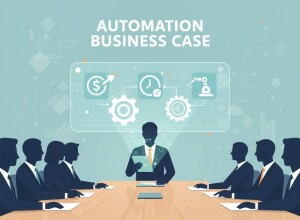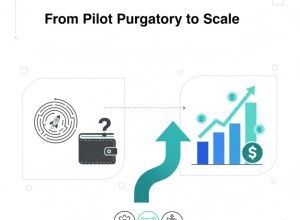Cobot Palletizing in Tight Spaces: Stacked ROI
- October 29, 2025
Cobot Palletizing in Tight Spaces: Stacked ROI For many manufacturers, floor space is the most expensive commodity. Collaborative palletizing sys...
Read MoreMixed-Case Palletizing: Vision and Path Planning
- October 29, 2025
Mixed-Case Palletizing: Vision and Path Planning Mixed-case palletizing — stacking boxes of varying sizes and weights — challenges ev...
Read MoreFrom Manual to Lights-Out: A Tending Roadmap
- October 29, 2025
From Manual to Lights-Out: A Tending Roadmap “Lights-out” automation — running unmanned shifts — is no longer reserved fo...
Read MoreCycle Time Math: How to Hit Your Takt with Cobots
- October 29, 2025
Cycle Time Math: How to Hit Your Takt with Cobots In machine tending, hitting takt time means more than just moving fast — it’s about...
Read MoreQuick-Change Grippers and Fixtures: Setup in Minutes
- October 29, 2025
Quick-Change Grippers and Fixtures: Setup in Minutes In high-mix manufacturing, changeover time is the silent killer of productivity. Cobots shin...
Read MoreTending CNCs Safely: Doors, Interlocks, and Guarding
- October 29, 2025
Tending CNCs Safely: Doors, Interlocks, and Guarding Safety is the foundation of every successful cobot tending cell. CNCs include sharp tools, r...
Read MoreHigh-Mix, Low-Volume Machine Tending with Cobots
- October 29, 2025
High-Mix, Low-Volume Machine Tending with Cobots For many shops, automation once meant high-volume, single-part runs. Collaborative robots (cobot...
Read MoreEtherCAT, PROFINET, and TSN: Choosing Your Motion Bus
- October 29, 2025
EtherCAT, PROFINET, and TSN: Choosing Your Motion Bus Choosing a real-time Ethernet network for motion control can make or break system performan...
Read MoreRegeneration and Braking: Energy and Safety Considerations
- October 29, 2025
Regeneration and Braking: Energy and Safety Considerations Modern motion systems don’t just move — they recover energy. Regenerative...
Read MoreMultiaxis Coordination: Gearing, Cam Tables, and Jerk
- October 29, 2025
Multiaxis Coordination: Gearing, Cam Tables, and Jerk Complex motion systems — from packaging machines to printing presses — rely on...
Read MoreServo Tuning in 2025: Autotune vs Manual — Who Wins?
- October 29, 2025
Servo Tuning in 2025: Autotune vs Manual — Who Wins? Servo tuning has evolved from oscilloscopes and intuition to software-assisted autotun...
Read MoreSelecting Encoders: Incremental, Absolute, and Safety
- October 29, 2025
Selecting Encoders: Incremental, Absolute, and Safety Encoders are the eyes of your motion system. Choosing between incremental, absolute, and fu...
Read MoreProof Testing Intervals That Don’t Kill Uptime
- October 29, 2025
Proof Testing Intervals That Don’t Kill Uptime Proof testing ensures that safety systems still meet their intended performance — but...
Read MoreCommon Cause Failures: What Your FMEA Must Include
- October 29, 2025
Common Cause Failures: What Your FMEA Must Include Redundancy only works when failures are independent. Common cause failures (CCFs) — wher...
Read MoreSafety PLCs vs Relays: When Each Makes Sense
- October 29, 2025
Safety PLCs vs Relays: When Each Makes Sense Both safety relays and safety PLCs can implement safety functions like emergency stops, guard monito...
Read MoreValidating Safe Motion: STO, SS1, SLS, and SSM
- October 29, 2025
Validating Safe Motion: STO, SS1, SLS, and SSM Modern drives don’t just stop — they stop safely. Functional safety in motion control...
Read MorePL and SIL Without Tears: Selecting Safety Functions
- October 29, 2025
PL and SIL Without Tears: Selecting Safety Functions Performance Level (PL) and Safety Integrity Level (SIL) are two ways of quantifying how reli...
Read MoreMeasuring Zero Trust Maturity in Factories
- October 29, 2025
Measuring Zero Trust Maturity in Factories Zero Trust isn’t a product — it’s a journey. Measuring progress helps OT leaders pri...
Read MoreRemote Work in OT: Secure Access without VPN Sprawl
- October 29, 2025
Remote Work in OT: Secure Access without VPN Sprawl Since 2020, remote access to industrial systems has skyrocketed — but so have breaches...
Read MoreLeast Privilege for HMIs and SCADA: Design Patterns
- October 29, 2025
Least Privilege for HMIs and SCADA: Design Patterns Least privilege means giving each user and process only the permissions needed — nothin...
Read More


























































